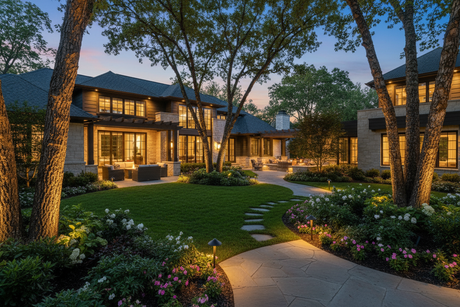When I first decided to light up my walkway, I thought it’d be easy—just pick a few cute fixtures and call it a day. Turns out, there’s a lot more to it. I didn’t realize how much color temperature and brightness could change the whole look and feel of a space.
Good lighting does way more than help you see where you’re walking. It makes your yard feel warm, welcoming, and even a little magical at night. Once I figured that out, I stopped rushing and started learning how to get the glow just right.
Warm or Cool? The Color Temperature Lesson
At first, I didn’t even know what “3000K” meant. But I learned that color temperature (measured in Kelvin) affects whether your lights look warm and cozy or cool and crisp.
- 2700K–3000K: This gives that soft, golden glow—perfect for home walkways and patios.
- 3000K–4000K: More neutral, better for visibility without being harsh.
- 4000K+ feels almost like daylight—great for driveways or security lights, but not so great for creating a relaxing vibe.
I ended up choosing 3000K, and it completely changed the feel of my yard. The path looks clear and bright, but still calm and inviting.

Getting Brightness Just Right
I used to think “more watts = more light,” but that’s not how LEDs work. It’s all about lumens now.
For walkways, 200–300 lumens per fixture is the sweet spot. It’s bright enough to walk safely but soft enough that you don’t feel blinded. Anything stronger just kills the mood.
Once I switched to lower-lumen fixtures, my whole walkway started to glow evenly instead of shining in patches.
Mistakes I Made (and Fixed)
I’ll admit, my first setup was kind of a mess.
- I added way too many lights—it looked like a mini airport runway.
- I mixed warm and cool fixtures without realizing it. The colors didn’t match, and it looked chaotic.
- I placed lights too close to the edges, which made weird shadows.
After some trial and error, I spaced them about 6 feet apart, all at 3000K, with a wide beam angle for smooth coverage. Finally, it looked balanced and natural.
Why Materials and Voltage Matter
If you live somewhere humid (like I do), go for solid brass or stainless steel fixtures. They last forever and don’t corrode.
And definitely use low voltage (12V) lighting—it’s safer, energy-efficient, and easy to install yourself. I clean the lenses once in a while, check the connections, and that’s pretty much it for maintenance.

The Final Result
Now I have eight brass LED pathway lights, each 3000K and around 250 lumens, placed along a 40-foot path. They create this soft, even glow that feels cozy but still practical.
Every evening when the lights turn on, my yard feels alive. Friends always comment on how warm and peaceful it looks—exactly what I wanted.

What I’d Tell Anyone Starting Out
If you’re planning your own walkway lighting, here’s my advice:
- Stick around 2700K–3000K for warmth.
- Keep brightness between 200–300 lumens per light.
- Space them evenly—about 6 feet apart works great.
- Choose durable, low-voltage fixtures that can handle the weather.
Outdoor lighting doesn’t have to be complicated. Once you find that balance of warmth, brightness, and placement, your walkway will look beautiful—and you’ll actually enjoy those evening walks.









